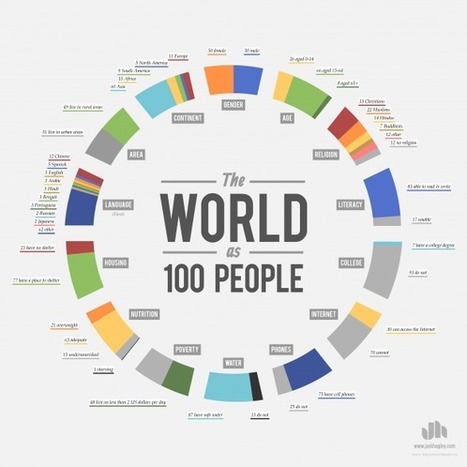"Infographics to explain global statistics."
Get Started for FREE
Sign up with Facebook Sign up with X
I don't have a Facebook or a X account
 Your new post is loading... Your new post is loading...
 Your new post is loading... Your new post is loading...
|

Peter B. Sloep's curator insight,
June 7, 2013 5:32 AM
Many have argued that maintaining employability in a knowledge society demands that learning doesn't stop when graduating, rather it requires that the formal, school-based learning be succeeded by a life of continuous learning, mostly in informal settings. Sensible though this may be, there is a problem. Formal learning breeds an attitude of dependence, listening to your teachers and complying with school rules. Informal learning is largely independent, self-guided learning, which requires almost the opposite attitude of being selective about what others claim and making up your own rules. Therefore, if lifelong learning for the knowledge society has any chance to take root, schools (starting at the secondary level already, K-12) should help their students and pupils to become independent learners. Since this requires nothing less than a change of philosophy, it goes without saying that actually doing so is not easy.
The article's idea of teaching children to create and maintain their own personal learning environment therefore is a much to be welcomed initiative. Thus far, PLEs have mainly caught on in the realm of professional development, with people as Jane Hart and Harold Jarche arguing for the important role they can have in the corporate world. However, this article shows that people in secondary education have perfectly understood that children already should be trained to do so.
The article makes much of the use of Symboloo, with which I am not familiar. But it is important that the children are not taught the tricks of a particular tool but rather become familiar with the idea of creating and maintaining a PLE, irrespective of its implementation in a particular tool. (@pbsloep) |













Gr8 Info simplifying stats.
Un conjunto de sencillas infografias para visualizar estadisticas de la humanidad en el tiempo presente
If the World was 100 People shows the statistics of the world as in smaller proportions allowing them to be easily visualized.
Some of the graphics divide the people into regions and nationalities mainly as Formal by continents .